Luca Schmidtke
Self-Supervised 3D Human Pose Estimation in Static Video Via Neural Rendering
Oct 10, 2022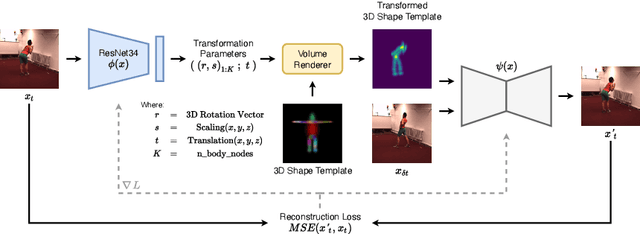
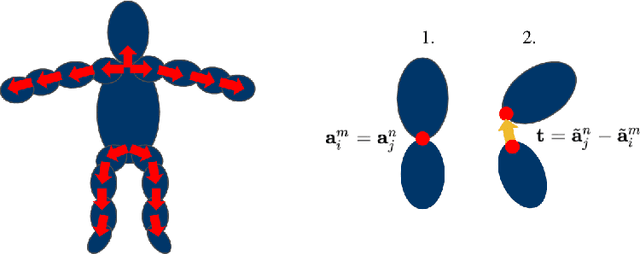
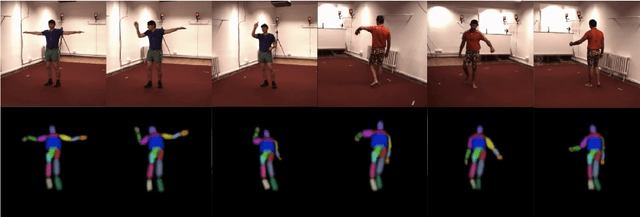
Abstract:Inferring 3D human pose from 2D images is a challenging and long-standing problem in the field of computer vision with many applications including motion capture, virtual reality, surveillance or gait analysis for sports and medicine. We present preliminary results for a method to estimate 3D pose from 2D video containing a single person and a static background without the need for any manual landmark annotations. We achieve this by formulating a simple yet effective self-supervision task: our model is required to reconstruct a random frame of a video given a frame from another timepoint and a rendered image of a transformed human shape template. Crucially for optimisation, our ray casting based rendering pipeline is fully differentiable, enabling end to end training solely based on the reconstruction task.
Unsupervised Human Pose Estimation through Transforming Shape Templates
May 10, 2021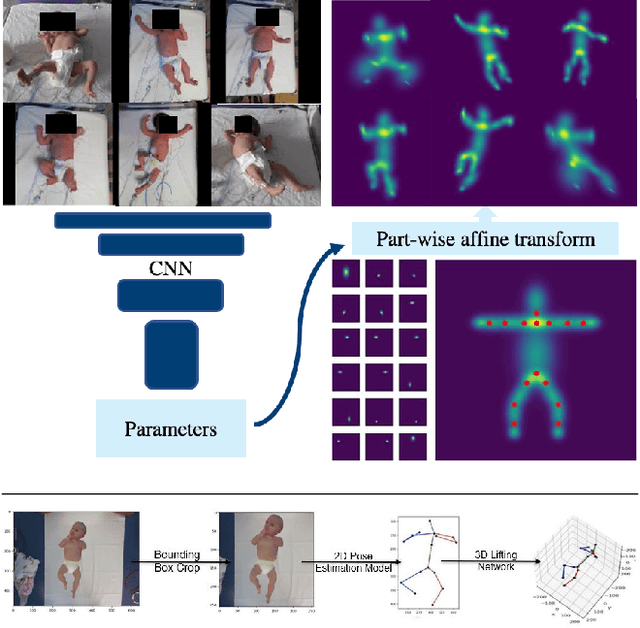
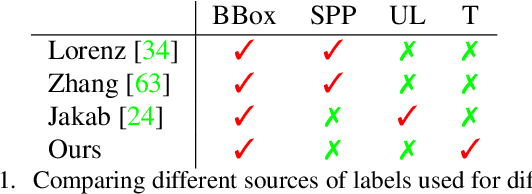
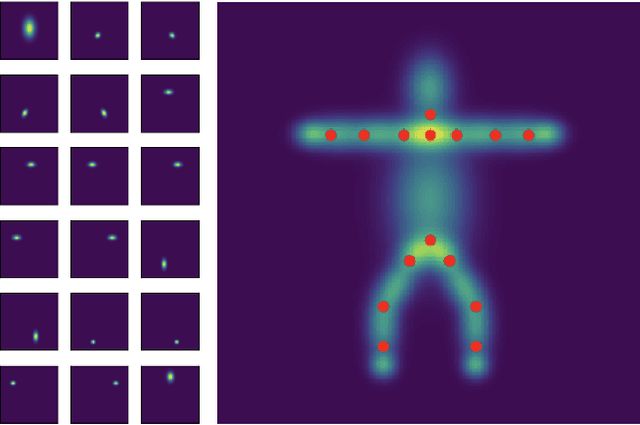
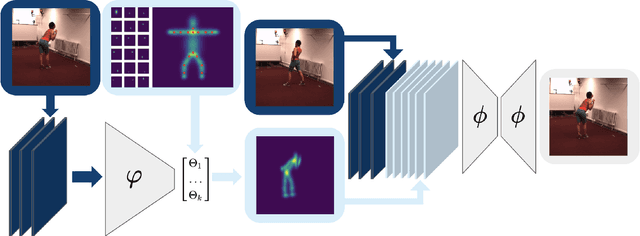
Abstract:Human pose estimation is a major computer vision problem with applications ranging from augmented reality and video capture to surveillance and movement tracking. In the medical context, the latter may be an important biomarker for neurological impairments in infants. Whilst many methods exist, their application has been limited by the need for well annotated large datasets and the inability to generalize to humans of different shapes and body compositions, e.g. children and infants. In this paper we present a novel method for learning pose estimators for human adults and infants in an unsupervised fashion. We approach this as a learnable template matching problem facilitated by deep feature extractors. Human-interpretable landmarks are estimated by transforming a template consisting of predefined body parts that are characterized by 2D Gaussian distributions. Enforcing a connectivity prior guides our model to meaningful human shape representations. We demonstrate the effectiveness of our approach on two different datasets including adults and infants.
Topological Data Analysis of Database Representations for Information Retrieval
Apr 04, 2021Abstract:Appropriately representing elements in a database so that queries may be accurately matched is a central task in information retrieval. This recently has been achieved by embedding the graphical structure of the database into a manifold so that the hierarchy is preserved. Persistent homology provides a rigorous characterization for the database topology in terms of both its hierarchy and connectivity structure. We compute persistent homology on a variety of datasets and show that some commonly used embeddings fail to preserve the connectivity. Moreover, we show that embeddings which successfully retain the database topology coincide in persistent homology. We introduce the dilation-invariant bottleneck distance to capture this effect, which addresses metric distortion on manifolds. We use it to show that distances between topology-preserving embeddings of databases are small.
 Add to Chrome
Add to Chrome Add to Firefox
Add to Firefox Add to Edge
Add to Edge